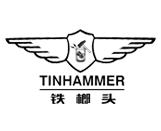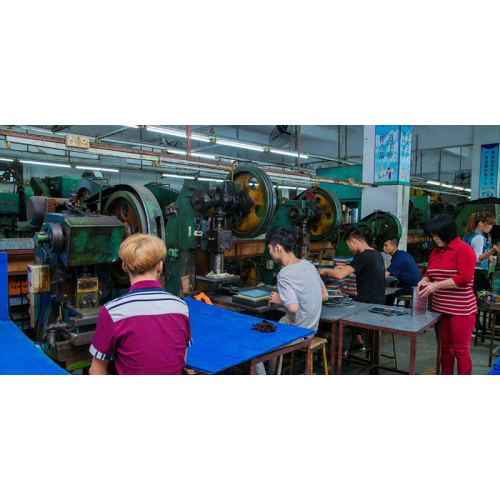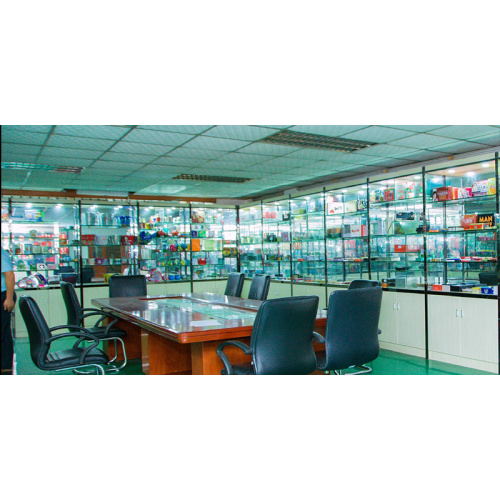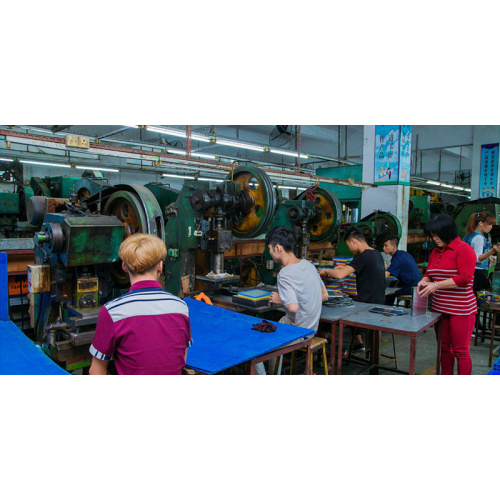The output value of metal packaging products accounted for the ratio of the total output value of packaging materials and containers in Japan. Before 2001, the proportion was above 20%, such as 22.4% in 1994, 22.7% in 1997, 19.7% in 2001, and 18.8 in 2004. %, further reduced to 18% in 2005. The proportion of metal packaging production in Japan’s total packaging output was over 12% before 1997, and over 11% between 1998 and 2001. It dropped to over 10% from 2002 to 2004, and dropped to 9.8% in 2005.
Since the mid-1990s, Japan’s metal packaging has fallen all the way, with continuous reduction in output value and output, and the share of all packaging products has also been declining. The output value of Japanese metal packaging products reached 1.5 trillion yen or more between 1994 and 1997, such as 1.5 trillion yen in 1994, 1.53 trillion yen in 1995, and 1.56 trillion yen in 1997. The highest historical value so far. The annual output is also over 2.8 million tons, which was 2.83 million tons in 1996 and 1997. After 1998, the output value and output of metal packaging products in Japan decreased year by year. Metals. This article is derived from the Chinese packaging bottle net. The output value of packaging products decreased from 1,230 billion yen in 2000 to 1,091 billion yen in 2002 and The amount of 1,083 billion yen in 2003 was slightly increased to 1,093 billion yen in 2004, but it was reduced to 1,057,000 million yen in 2005, the lowest level in more than a decade. The output decreased from 2.59 million tons in 2000 to 2.48 million tons in 2001, 2.16 million tons in 2002 and 2.08 million tons in 2003. It increased slightly to 2.1 million tons in 2004, and it was reduced to 2.06 million tons in 2005. It is also the lowest value in the past 10 years.
Metal packaging products include iron products and aluminum products. In terms of output, metal packaging products dominate. In 2000, the output of Japanese metal packaging products was 2.1 million tons; in 2001 it was reduced to 1.95 million tons, accounting for nearly 80% of the total output of metal packaging products. Since 2002, the output has plummeted year after year, and was reduced to 1.54 million tons by 2005, but still accounted for 3/4 of the total output. The output of aluminum packaging products is far lower than that of tin products. In recent years, the output of aluminum packaging products has been around 500,000 tons, and in 2005 it was 510,000 tons. Although the output of aluminum packaging products is small, the output value is not small. In 2005, the output value of aluminum packaging products in Japan was 589 billion yen, which was even higher than the 468.2 billion yen of metal packaging products.
Metal cans (tin cans and aluminum cans) are the main products in metal packaging products. The production of tin cans (including food and beverage cans and 18-liter cans) decreased from 1.31 million tons in 2001 to 1.02 million tons in 2003 and 940,000 tons in 2005. The output of other metal packaging containers was 600,000 in 2005. Ton. The output value of tin cans for food and beverages was 240 billion yen in 2005, 63.5 million yen in 18-liter cans, and 86 billion yen in white tin products.
The output of Japanese aluminum cans was 450,000 tons in 2001 and increased to 464,000 tons in 2004, but it was slightly reduced to 454,000 tons in 2005. Aluminum beverage cans have grown for many years in succession, from 198,000 tons in 1992 to 265,000 tons in 1995, 266,000 tons in 2000, 291,000 tons in 2002 and 303,000 tons in 2004, and 30.3 in 2005. Ten thousand tons. The consumption of aluminum beverage cans increased from 3 billion in 1985 to 8.1 billion in 1989, 11.8 billion in 1993, 16.6 billion in 1997, 16.8 billion in 2000, and 17.7 billion in 2003. And 18.5 billion in 2004, slightly reduced to 18.4 billion in 2005. The output value of aluminum beverage cans has increased year after year, from 264 billion yen in 2001 to 311 billion yen in 2003 and 320 billion yen in 2005, respectively. In addition, packaging aluminum foil reached 65,000 tons in 2001, up and down 50,000 tons in recent years, and 49,000 tons in 2005. The foil used in food packaging was between 35,000 and 36,000 tons before 2001, increased to 37,800 tons in 2002, and rose to 38,100 tons in 2003. Among them, the amount of beverage packaging used was 6,860 tons, which accounted for 18%; the amount of cake confectionery was 6,480 tons, which accounted for 17%; the snack food amount was 6,300 tons, which accounted for 16.5%; the cheese product amount was 2,300 tons, which accounted for 6%. In addition, the aluminum foil used for packaging of chemical products (predominantly cosmetics) increased from 6,500 tons in 1998 to 7,100 tons in 1999 and 7,200 tons in 2000, respectively, and 7,700 tons in 2002 and 2003.
The reason for the decline of metal packaging products lies in the sluggish packaging industry in Japan and a significant increase in the market share of plastic packaging. The scale of the Japanese packaging industry reached 7.5 trillion yen in 1991. Since then, the packaging industry has continued to slump, dropping to 5.9 trillion yen in 2005. Japan's economy has been sluggish for a long time. The packaging needs of enterprises have been compressed, and the packaging industry is in the doldrums. Most packaging materials and products, including metal packaging products, cannot be affected, and there will inevitably be various degrees of decline. However, plastic packaging products continued to grow. The output value of plastic packaging increased from 1.29 trillion yen in 1999 to 1.66 trillion yen in 2005. The ratio of the output value of plastic packaging to the total output value of packaging increased from 21.6% in 1999 to 28.8% in 2005. It shows that the status of plastic packaging is more and more important, and the continuous and rapid growth of plastic packaging materials and containers will inevitably replace a considerable part of metal containers and other containers (such as paper containers, glass containers, etc.), which is also important for the reduction of metal packaging products in Japan. the reason.









